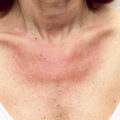Pregnancy with HIV infection in the mother
Deciding to have a child is a big step for any woman, but for a woman living with HIV it is even more difficult. Remember that if you plan ahead for pregnancy, you have many options to protect your health and the health of your unborn baby. In our article you will learn how to do this.
Good news
Thanks to advances in treatment and care for the human immunodeficiency virus, many women living with HIV are living longer, healthier lives and planning for their futures. However, many representatives of the fair sex sooner or later face the question of family planning and procreation.
The good news is that advances in HIV treatment have significantly reduced the likelihood of a mother passing HIV to her baby (also known as perinatal HIV transmission or vertical transmission). The World Health Organization reports that when mothers do NOT take antiretroviral drugs, the risk of perinatal HIV transmission is 45%. However, with proper treatment of HIV infection, the likelihood of perinatal transmission is reduced to 5 cases per 100 births.
According to the US Centers for Disease Control and Prevention, if a mother is on antiretroviral therapy for HIV and the amount of virus in her blood, called the "viral load" , is not detected by standard tests, then the chance of transmission is only 1%.
Preparing for pregnancy
When preparing to conceive a child, women with HIV are advised to do the following:
- Discuss your plans with your healthcare provider to ensure that you are taking the right treatment plan for your own health and that the risk of perinatal transmission is minimal. If you are currently taking an HIV medicine that contains dolutegravir (such as Tivicay or Triumeq), discuss the possible risk of birth defects in your baby with your doctor;
- Find an obstetrician or gynecologist who is experienced in caring for pregnancies in women with HIV. Such a specialist will tell you all the pregnancy options with minimal risk for your partner;
- Get tested for sexually transmitted infections or diseases (STIs or STDs), hepatitis B and C, and tuberculosis;
- If you have bad habits, do everything you can to stop smoking, drinking or taking drugs - all of which can be harmful to your health and the health of your baby. Recently, scientists discovered that smoking significantly increases the risk of miscarriage and stillbirth in women living with HIV;
- Start taking vitamins (“prenatal” vitamins) that contain folic acid before you conceive. They will help reduce the risk of certain birth defects;
- If friends and family do not support your decision to have a child, find support among people who are open-minded and knowledgeable about HIV and pregnancy. Such people can be found, for example, among women living with HIV who are also thinking about pregnancy or who already have children.
Pregnancy and HIV infection: recommendations
If an HIV-positive woman decides to become pregnant, it is strongly recommended that she undergo a comprehensive examination, including a series of blood tests, to determine her health and HIV viral load. A viral load test is necessary if a woman:
- just starting to take anti-HIV medications;
- is already taking HIV medication and has a detectable viral load (500-1000 copies or more).
The results of a resistance test can help you and your doctor choose the best drugs to take.
Recent research has shown that starting treatment for HIV infection early, even if you feel well and have high CD4 cell counts (a strong immune system), is the best way to stay healthy while living with HIV.
In addition, starting HIV treatment and having an undetectable viral load before pregnancy is safer not only for the mother, but also for the child. The World Health Organization (WHO) recommends that all pregnant and breastfeeding women living with HIV, regardless of their CD4 cell count, begin HIV treatment as soon as possible and continue it throughout their lives. This is important for both the health of the woman and her baby, since HIV medications can reduce the risk of perinatal transmission.
HIV medications must be taken exactly as prescribed by your doctor to get the best treatment results. Additionally, if a woman living with HIV takes medication and has an undetectable viral load, the risk of transmitting HIV to a sexual partner is virtually zero.
HIV therapy during pregnancy
Most HIV medications are safe to take during pregnancy, and studies have shown that the baby will be healthier if the mother begins HIV treatment before pregnancy. In general, pregnant women can receive the same HIV treatment as women who are not pregnant.
However, there are certain medications that should be avoided or used with caution due to possible side effects in the mother or fetus. These drugs include the combination of Videx (Didanosine, DdI) and Zerit (Stavudine, D4T) or the combination of Zerit and Retrovir (Zidovudine or AZT). Viramune (Nevirapine) should not be given to women whose CD4 cell count is greater than 250. Medicines containing dolutegravir (Tivicay, Triumeq) may cause birth defects if taken during pregnancy or early pregnancy.
Although there has previously been some debate about the safety of taking Efavirenz (also known as Sustiva or Stocrin) during early pregnancy, the Ministry of Health's recommendations are now in line with those of the World Health Organization (WHO). All organizations suggest that efavirenz can be taken throughout pregnancy, including the first trimester (12 weeks). In addition, women whose bodies successfully suppress viruses during treatment containing efavirenz and who become pregnant should continue taking this drug throughout their pregnancy.
Discuss the risks and benefits of the HIV medications you take with your doctor to decide which treatment is best for you and your baby.
Avoiding therapy during pregnancy
It is important for a pregnant woman to take a combination of HIV medications for her own health, as well as to reduce the chance of passing HIV to her baby. HIV treatment should begin as soon as possible. Many HIV medications are safe to take during pregnancy.
It is important that HIV treatment continues during labor and after delivery. Women with a viral load of 1,000 or more copies should also receive intravenous Retrovir, regardless of their HIV drug regimen during pregnancy. Women with a viral load of less than 1000 copies do not need to receive Retrovir intravenously.
After birth, the baby should receive liquid Retrovir for six weeks. If the mother received HIV medication during pregnancy, but the viral load remains high, the doctor may consider giving the newborn Retrovir for 4 weeks.
After the baby is born, it is important for the mother to talk with her doctor about the risks and benefits of continuing her HIV treatment. WHO recommends that all adults, including new mothers, receive HIV medications regardless of CD4 count.
Childbirth
There are a number of invasive prenatal tests, such as amniocentesis, chorionic villus sampling, and umbilical cord blood sampling, that may increase the risk of passing HIV to your baby. Consult your doctor if you need to undergo these procedures. Also, certain procedures during labor, such as invasive monitoring and vacuum-assisted fetal extraction, should be avoided if possible.
Viral load should be checked when you first see your doctor during pregnancy, when you start taking HIV medications, and every month thereafter until the mother's viral load is undetectable. Then, the viral load can be checked every trimester (every 12 weeks) during pregnancy. Also, the viral load should be tested at 36 weeks of pregnancy to determine the type of birth that is best for mother and baby.
There are 2 types of childbirth: caesarean section and natural birth.
Women living with HIV need a caesarean section if:
- viral load more than 1000 copies;
- viral load is unknown;
- Caesarean section is necessary for other reasons related to pregnancy, not related to the presence of HIV infection in the mother.
If a woman requires a planned caesarean section, it is performed before natural labor begins and her waters break. Such measures reduce the baby's exposure to the mother's blood and help reduce the risk of HIV transmission. Since a caesarean section requires surgery, there are still risks. Women who give birth by cesarean section are more likely to pass HIV infection to the baby than those who give birth vaginally.
After the baby is born
During the first 4-6 weeks, the child will need to take Retrovir and possibly other HIV medications. Also, it is necessary to take material from a newborn child to conduct a general clinical blood test.
Subsequently, the child will have an HIV viral load test to determine whether infection has occurred. HIV antibody tests, which are commonly used to determine HIV infection in adults, are not used for newborns because babies retain their mother's antibodies for up to 18 months.
If by the time the child is 4 months old he has 2 negative HIV tests, he is healthy. If a child tests positive for HIV, HIV treatment must be started immediately.
Because there is a possibility of HIV transmission through breast milk, doctors strongly recommend that mothers with HIV not breastfeed.
The good news is that breast milk contains many important antibodies needed to keep your baby healthy and has been found to contain a protein, Tenascin-C, that helps neutralize the virus. Although there is still a risk of HIV transmission through breastfeeding, it is greatly reduced if the mother is taking HIV medications and has an undetectable viral load.
Mixed feeding, in which the baby is given breast milk as well as other formulas (for example, baby food), is not recommended. It is now believed that mixed feeding may damage the stomach lining of children and increase the likelihood of contracting HIV through breastfeeding. If for some reason you are unable to exclusively formula feed your baby, experts recommend taking HIV medications and feeding only breast milk.




